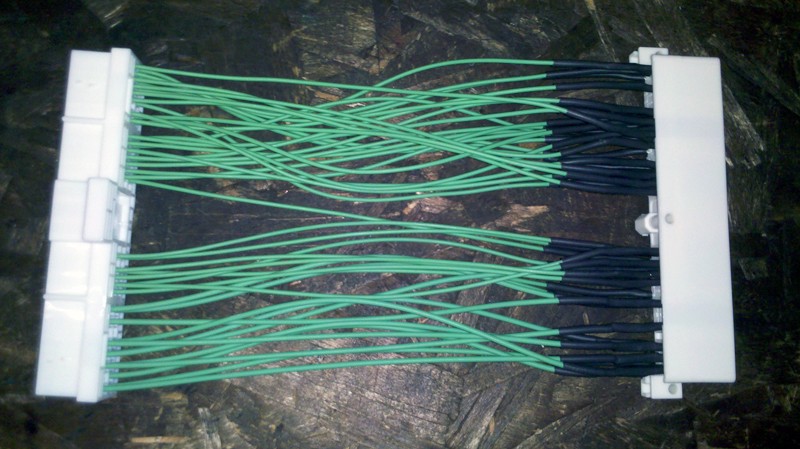An Obd2 Jumper harness simplifies the process of tuning an OBD1 ECU in vehicles with an OBD2 diagnostic port. It allows tuners to use OBD1 tuning tools and software on newer vehicles, bypassing the need for complex adapters or modifications. This article delves into the functionality, benefits, and applications of OBD2 jumper harnesses.
Understanding OBD2 Jumper Harnesses
OBD2 jumper harnesses are essentially plug-and-play adapters that bridge the gap between OBD1 and OBD2 systems. They connect to the vehicle’s OBD2 port and reconfigure the pinouts to emulate an OBD1 connection. This enables compatibility with OBD1 diagnostic and tuning equipment. The harness typically consists of a series of wires and connectors specifically designed for this purpose.
Benefits of Using an OBD2 Jumper Harness
Using an OBD2 jumper harness offers several advantages for tuning enthusiasts and professionals:
- Simplified Tuning: The harness allows the use of readily available and often more affordable OBD1 tuning tools and software on OBD2 equipped vehicles.
- Cost-Effective Solution: Compared to purchasing dedicated OBD2 tuning equipment or modifying the vehicle’s wiring, an OBD2 jumper harness provides a more budget-friendly option.
- Preserves Vehicle Integrity: The harness avoids the need for permanent modifications to the car’s electrical system, preserving its original configuration.
- Easy Installation: Most OBD2 jumper harnesses are designed for straightforward installation, often requiring minimal technical expertise.
Applications of OBD2 Jumper Harnesses
OBD2 jumper harnesses find application in various scenarios:
- ECU Tuning and Diagnostics: The primary use is to enable tuning and diagnostics of OBD1 ECUs in vehicles with OBD2 ports. This allows for adjustments to fuel maps, ignition timing, and other parameters for performance optimization.
- Performance Modifications: When upgrading to an aftermarket OBD1 ECU in an OBD2 vehicle, the harness becomes essential for tuning and monitoring the new ECU.
- Troubleshooting: The harness facilitates using OBD1 diagnostic tools to pinpoint issues in the engine management system.
Compatibility and Considerations
Before using an OBD2 jumper harness, ensure compatibility with both the vehicle’s OBD2 system and the specific OBD1 tuning equipment. Factors like vehicle make and model, ECU type, and diagnostic protocols need consideration. Researching specific applications and consulting with experienced tuners is recommended. Bundling the harness with a tuning package can often reduce the overall cost.
Conclusion
OBD2 jumper harnesses provide a valuable tool for those working with OBD1 ECUs in OBD2 vehicles. Their simplicity, affordability, and ease of use make them a popular choice for tuning and diagnostics. By enabling the use of widely available OBD1 equipment, these harnesses simplify the tuning process and expand the possibilities for performance enhancement. However, careful consideration of compatibility is crucial for successful implementation.
